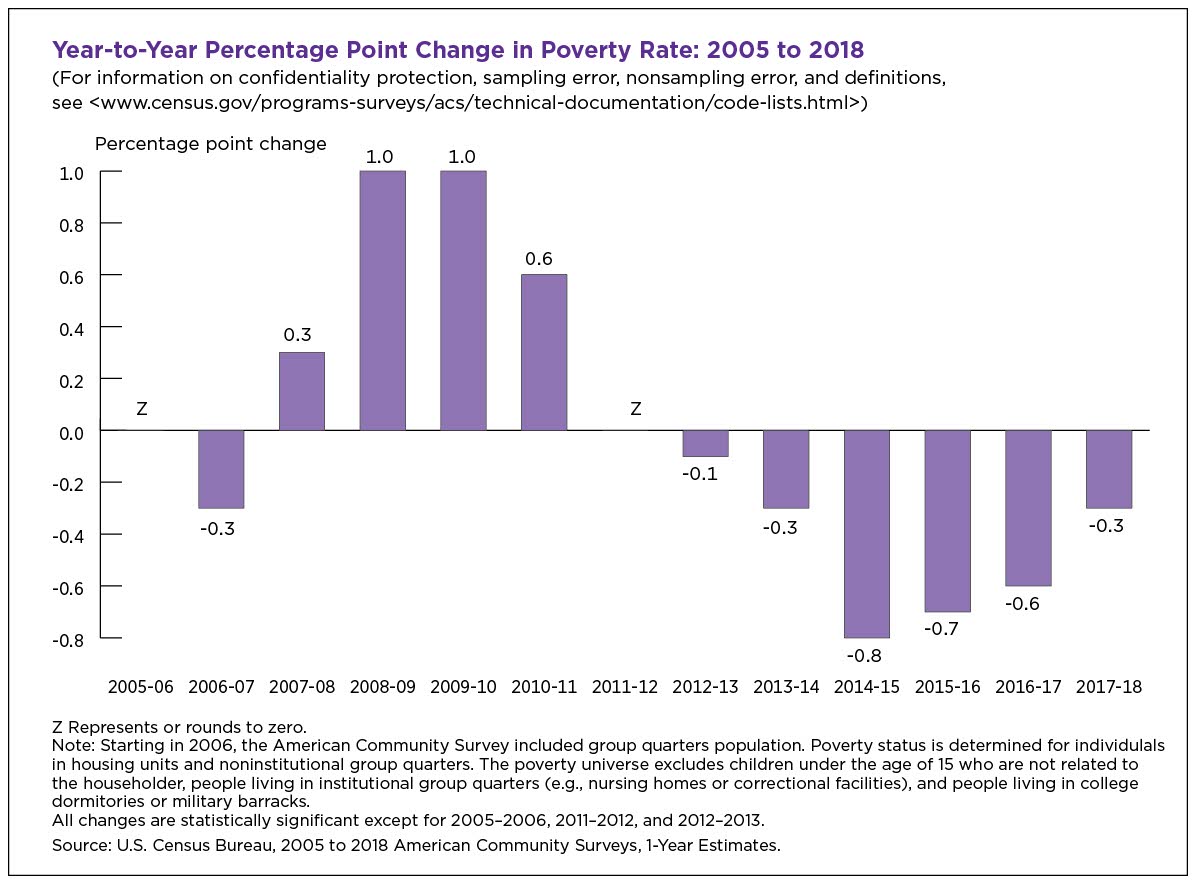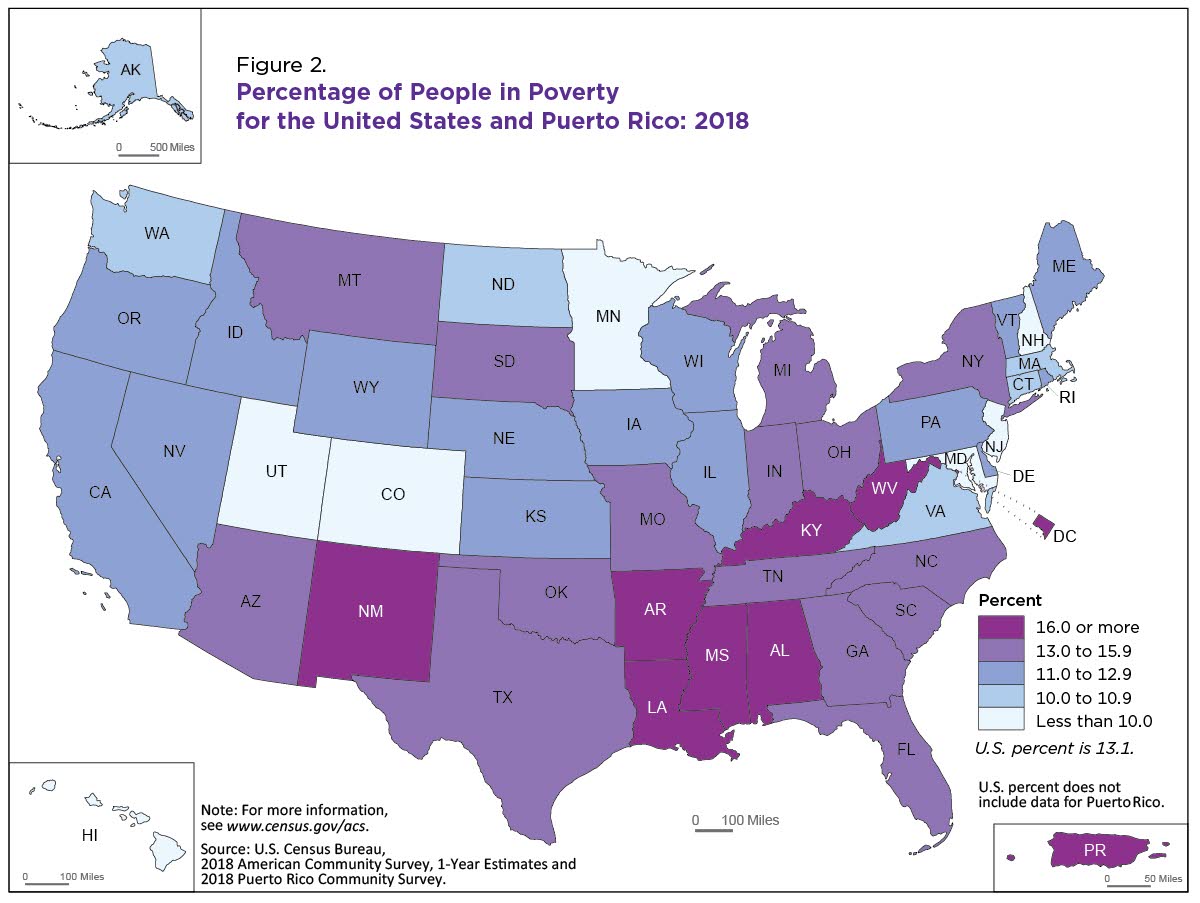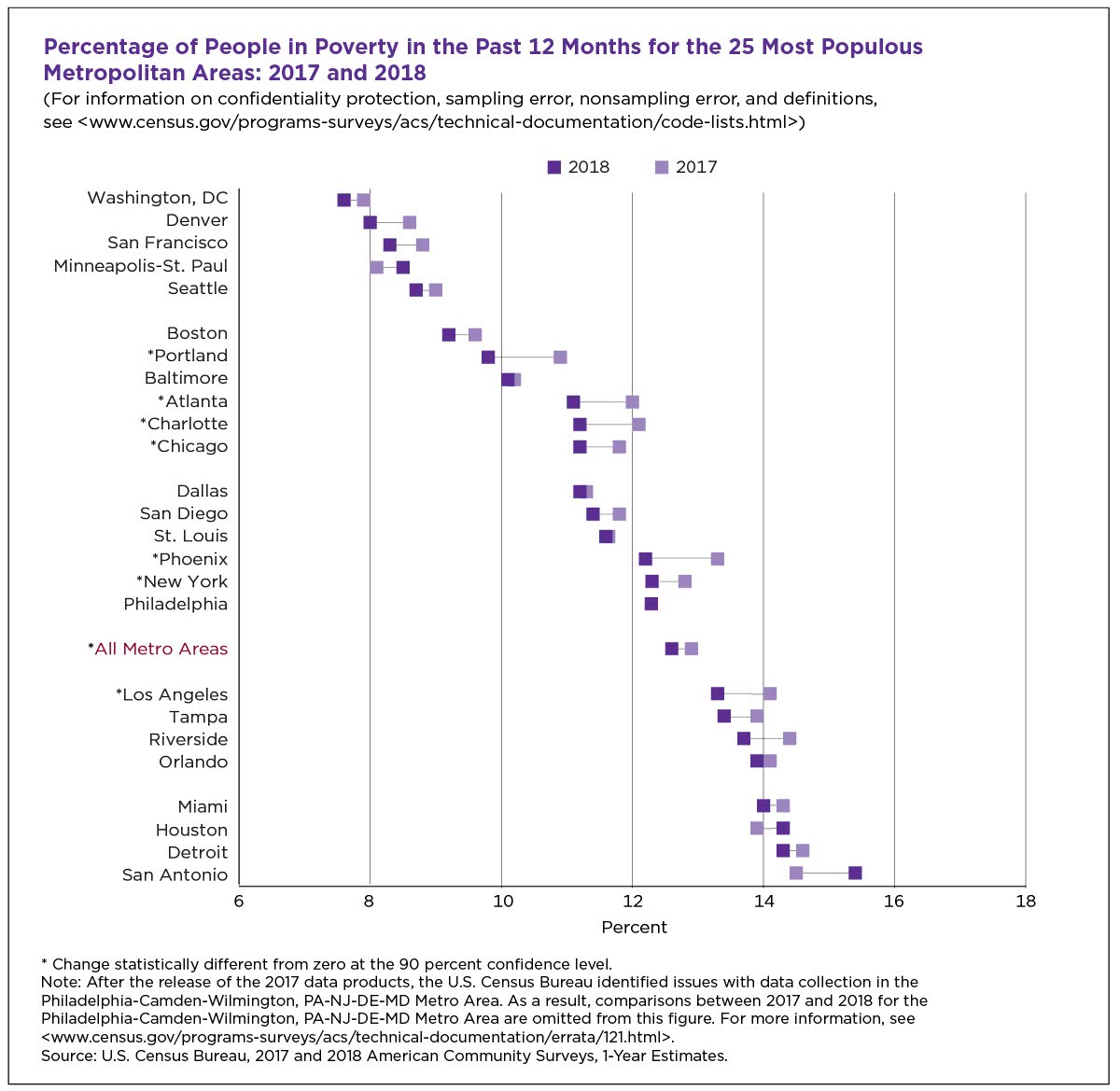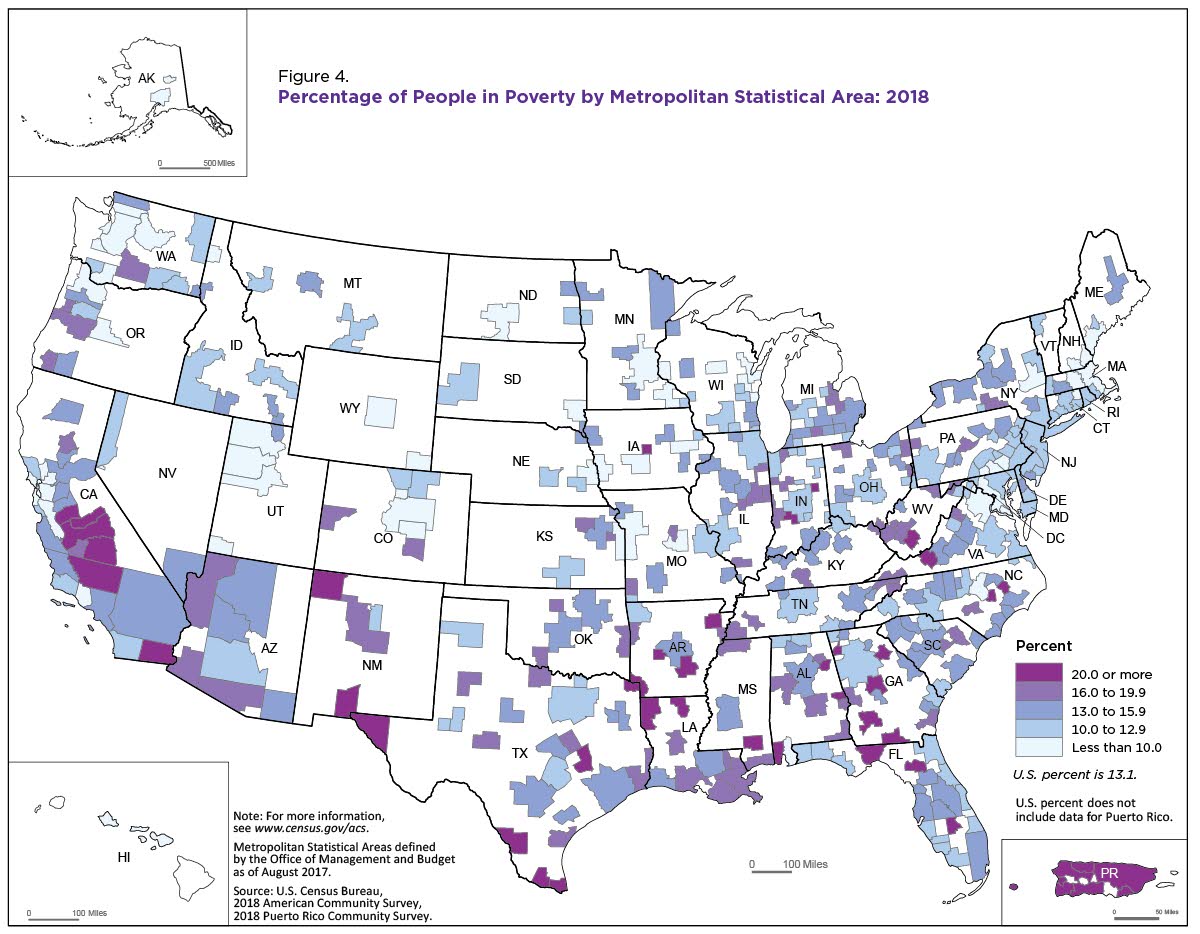Poverty Declined in 14 States and Puerto Rico in 2018
The share of the U.S. population with incomes below the poverty level dropped between 2017 and 2018 — the fifth consecutive annual drop, according to new American Community Survey (ACS) estimates released today.
The 1-year estimates from the U.S. Census Bureau’s 2018 ACS show declines in poverty in 14 states and Puerto Rico and in seven of the 25 most populous metropolitan areas.
The poverty rate declined in seven of the 25 most populous metropolitan areas. It dropped for the fourth consecutive year in five of these seven areas. Poverty did not increase in 2018 for any of the 25 most populous metropolitan areas.
Planners, policymakers and community stakeholders use poverty estimates to evaluate trends and current economic conditions in their communities. The ACS data allows them to make detailed comparisons across demographic groups.
In addition, federal and state governments often use these estimates to allocate funds to communities. Government agencies and local organizations regularly use the data to identify the number of individuals and families eligible for various assistance programs.
- In 2018, 13.1% of the U.S. population had income below the poverty level, down from 13.4% in 2017. This is the fifth consecutive annual decline in the ACS national poverty rate.
- New Hampshire had the lowest poverty rate in 2018 at 7.6% while Mississippi had among the highest at 19.7%.
- The poverty rate declined in 14 states and Puerto Rico. In three of those states (Arizona, Illinois and New York), poverty declined for a fourth consecutive year. Four states (California, Florida, Georgia and North Carolina) had declining poverty rates for a fifth year in a row.
- The poverty rate increased in only one state, Connecticut, from 9.6% in 2017 to 10.4% in 2018.
- The poverty rate declined in seven of the 25 most populous metropolitan areas. It dropped for the fourth consecutive year in five of these seven areas. Poverty did not increase in 2018 for any of the 25 most populous metropolitan areas.
- The Washington-Arlington-Alexandria, DC-VA-MD-WV Metro Area (7.6 %) and the Denver-Aurora-Lakewood, CO Metro Area had two of the lowest poverty rates among the 25 most populous metropolitan areas (Figure 3). (These two metro areas were not statistically different from each other.) Conversely, the San Antonio-New Braunfels, TX Metro Area (15.4%) had the highest poverty rate among these most populated metro areas.
- For the fourth year in a row, the percentage of people in poverty decreased in the three most populous metropolitan areas (New York-Newark-Jersey City, NY-NJ-PA Metro Area; Los Angeles-Long Beach-Anaheim, CA Metro Area; and the Chicago-Naperville-Elgin, IL-IN-WI Metro Area).
- Among all metropolitan areas, the Rochester, MN Metro Area (6.6%); the Sheboygan, WI Metro Area (6.6%); and the Ogden-Clearfield, UT Metro Area (6.7%) had among the lowest poverty rates. (These three metro areas were not statistically different from each other). The McAllen-Edinburg-Mission, TX Metro Area had among the highest poverty rates at 30.5%.
The Census Bureau also publishes poverty estimates based on the Current Population Survey Annual Social and Economic Supplement (CPS ASEC). For information on poverty estimates from the ACS and how they differ from those based on the CPS ASEC, see this factsheet.
Comparisons between 2017 and 2018 for Delaware and the Philadelphia-Camden-Wilmington, PA-NJ-DE-MD Metro Area are not made in this article.
Subscribe
Our email newsletter is sent out on the day we publish a story. Get an alert directly in your inbox to read, share and blog about our newest stories.
Contact our Public Information Office for media inquiries or interviews.
-
Income and PovertyPoverty Rate for People in Woman-Led Households Lowest on RecordSeptember 10, 2019The U.S. poverty rate dropped from 12.3% in 2017 to 11.8% in 2018. The decrease in poverty for women-led families comprised much of...
-
Income and PovertySupplemental Poverty Measure Shows State-Level Impact of Food StampsSeptember 10, 2019Report released today shows that the Supplemental Nutrition Assistance Program reduced poverty by just over 1 percentage point on average from 2016 to 2018.
-
Income and PovertyPayday, Poverty, and WomenSeptember 10, 2019Between 2017 and 2018, women working full-time, year-round experienced a significant gain in median earnings but more women than men live in poverty.
-
EmploymentThe Stories Behind Census Numbers in 2025December 22, 2025A year-end review of America Counts stories on everything from families and housing to business and income.
-
Families and Living ArrangementsMore First-Time Moms Live With an Unmarried PartnerDecember 16, 2025About a quarter of all first-time mothers were cohabiting at the time of childbirth in the early 2020s. College-educated moms were more likely to be married.
-
Business and EconomyState Governments Parlay Sports Betting Into Tax WindfallDecember 10, 2025Total state-level sports betting tax revenues has increased 382% since the third quarter of 2021, when data collection began.
-
EmploymentU.S. Workforce is Aging, Especially in Some FirmsDecember 02, 2025Firms in sectors like utilities and manufacturing and states like Maine are more likely to have a high share of workers over age 55.








